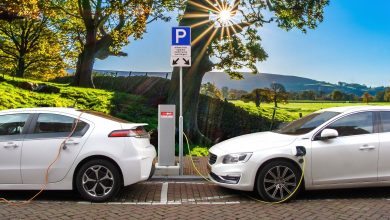Working Principle of Solar Energy Cells

Solar energy is the most abundant renewable energy source in the world. According to estimates, 10,000 times more energy than our annual energy need from fossil fuels reaches the world from the sun. Solar energy systems are systems that convert heat or light from the sun into usable forms of energy, such as electricity.
In today’s technology, there are 2 different systems used to benefit from solar energy. One of them is the thermal system, which uses the sun’s heat energy and is used for heating liquids or generating electricity. The other is the photovoltaic (PV) system. When the sunlight hits a semiconductor material, electrons are released and an electric current is generated. It is aimed to generate electrical energy with the help of semiconductors by directly using the rays coming from the sun in the PV system.
Solar panels are formed by connecting small and large numbers of solar cells to each other. Solar cells are usually composed of a semiconductor material called silicon (the second most abundant element in the world). Solar cells are made by placing crystalline silicon between two conductive layers. Each silicon atom forms 4 strong bonds with neighboring atoms. Thanks to these bonds, electrons cannot move and no electric current occurs. The silicone part in the middle also consists of 2 different silicone layers. These are n-type silicone and p-type silicone layers. The n-type silicon layer has extra electrons and the p-type silicon layer has extra spaces for these extra electrons. When these two layers come together, a P / N connection is formed and electrons can move freely from layer to layer thanks to this connection. Thanks to this movement, one side is loaded with a positive (+) load, while the other layer is loaded with a negative (-) load.
When photons from the sun hit the silicon cell with a sufficiently large energy, an electron from the silicon layer can collapse from the silicon layer by leaving a gap behind. Thus, the negatively charged electron and the positively charged space left behind can move freely. But thanks to the electrical charge in the P / N link, they can only move in one direction. The free electron is pulled towards the n side, and the gap towards the p side.
Moving electrons are collected by the thin metal layer at the top of the cell. With the generated electric current, energy can be stored in the batteries, the electricity need of our homes can be met or the excess energy obtained can be transferred to the city networks. In addition, the electricity we use in our homes is AC electricity. If we want to use it in our homes, we must add an inverter to the system that converts the DC electricity generated in the panels into the AC electricity we use in our homes. When the electrons have finished their function, they return to the conductive aluminum layer on the back of the solar panel. From here, it is transferred back to the solar cells.
Each silicon cell can produce only half a volt of current. Much more energy is produced with the solar panels created by combining them and establishing a connection between them. For example, while a cell phone can be charged by connecting 12 photovoltaic cells to each other, much more is required for the electricity needs of a house.
Electrons are the only parts that move in solar cells. Since the cells do not have any other parts, solar panels can be used for years without any damage. However, even the most effective solar panels produced today can convert 46 percent of the sun’s rays hitting it into electricity. In addition, most of the commercial systems currently installed operate at a maximum efficiency of 15-20 percent. One of the most important factors affecting the efficiency of these panels is the sunshine duration. Although this period increases up to 11 hours in the summer months in our country, it decreases to 5 hours in the winter months.
Although semiconductor materials other than silicon can be used to increase the efficiency of solar panels, today a different variation of silicon such as monocrystalline, polycrystalline or amorphous is preferred in 90 percent of these systems.





